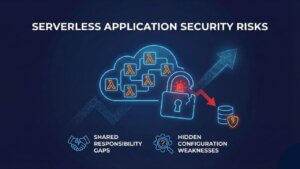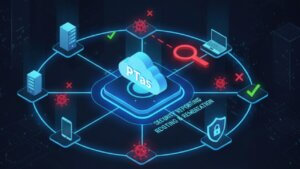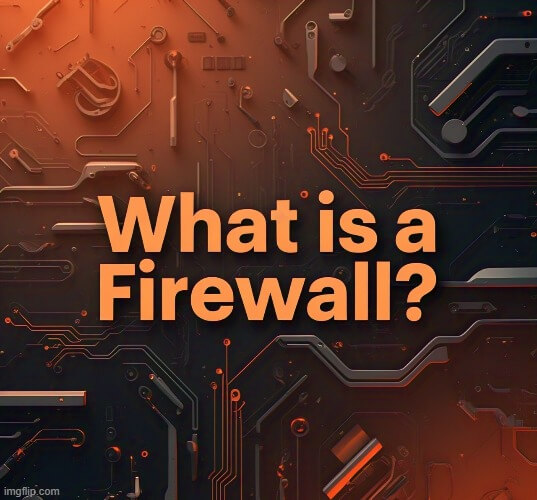Firewalls play a crucial role in safeguarding networks from unauthorized access and malicious threats. Whether you’re an individual user, a small business, or a large enterprise, understanding what a firewall is, its various types, and its use cases is essential for maintaining a secure digital environment.
Table of Contents
What is a Firewall?
In Cybersecurity a firewall is a security system that monitors and controls incoming and outgoing network traffic based on predefined security rules. It acts as a barrier between a trusted internal network and untrusted external networks, such as the internet, to block malicious traffic while allowing legitimate communication.
Firewalls have been a fundamental component of cybersecurity for decades. They are commonly used to prevent unauthorized access, detect suspicious activities, and protect sensitive data from cyber threats such as malware, ransomware, and hacking attempts.
Types of Firewalls
1. Packet-Filtering Firewall
Packet-filtering firewalls operate at the network layer (Layer 3) and transport layer (Layer 4) of the OSI model. They inspect packets of data and filter them based on source and destination IP addresses, ports, and protocols. If a packet matches the firewall’s rules, it is either allowed or blocked.
Pros:
Fast and efficient
Low resource consumption
Cons:
Limited ability to detect sophisticated attacks
Cannot inspect packet payloads
2. Stateful Inspection Firewall
Stateful firewalls go beyond packet filtering by keeping track of active connections. They analyze the context of network traffic and determine whether a packet is part of an established session or an unauthorized attempt to access the network.
Pros:
Provides better security than packet-filtering firewalls
Maintains records of active connections
Cons:
More resource-intensive than basic packet filtering
Can be susceptible to certain advanced evasion techniques
3. Proxy Firewall (Application-Level Firewall)
A proxy firewall operates at the application layer (Layer 7) and acts as an intermediary between users and the services they are trying to access. Instead of allowing direct connections, it processes requests on behalf of clients and forwards them securely to their destination.
Pros:
Can perform deep packet inspection (DPI)
Enhances anonymity and security
Cons:
Can introduce latency
Requires more computational resources
4. Next-Generation Firewall (NGFW)
NGFWs combine traditional firewall capabilities with advanced security features such as intrusion prevention systems (IPS), malware filtering, and deep packet inspection. They offer enhanced threat intelligence and can detect sophisticated attacks.
Pros:
Advanced threat detection and prevention
Deep packet analysis for better security
Cons:
Higher cost compared to traditional firewalls
Requires regular updates and maintenance
5. Cloud-Based Firewall (Firewall-as-a-Service – FWaaS)
Cloud-based firewalls provide security at the network perimeter through cloud infrastructure. These firewalls are ideal for organizations using cloud applications and remote work environments.
Pros:
Scalable and flexible
Ideal for securing remote users and cloud applications
Cons:
Requires internet connectivity to function
Potential latency issues depending on provider
Use Cases of Firewalls
Firewalls are employed in various environments to enhance network security. Below are some key use cases:
1. Enterprise Network Security
Large organizations use firewalls to protect internal systems, applications, and sensitive data from external threats. Firewalls help enforce security policies, prevent data breaches, and monitor network traffic.
2. Home Network Protection
Individuals use firewalls to protect their personal devices from cyber threats. Home routers often come with built-in firewalls that block unwanted traffic and prevent unauthorized access.
3. Cloud Security
As businesses migrate to the cloud, cloud-based firewalls ensure secure access to cloud services and protect against cyberattacks targeting cloud environments.
4. Data Centers and Web Servers
Firewalls play a crucial role in protecting data centers and web servers from attacks such as Distributed Denial of Service (DDoS) and unauthorized access attempts.
5. Compliance and Regulatory Requirements
Industries such as healthcare, finance, and government agencies use firewalls to meet compliance standards like GDPR, HIPAA, and PCI DSS. Firewalls help maintain secure data processing and prevent unauthorized access.
Conclusion
A firewall is a fundamental component of network security that acts as a gatekeeper, regulating access and protecting against cyber threats. With various types of firewalls available, organizations and individuals can choose the best option based on their security requirements. Whether for personal use, enterprise security, or cloud protection, implementing a robust firewall solution is essential in today’s digital world.
Understanding the role of firewalls and their use cases can significantly enhance cybersecurity posture, helping prevent data breaches, malware infections, and unauthorized access to sensitive information. By staying informed and regularly updating firewall configurations, users can maintain a strong defense against evolving cyber threats.
References
Why Businesses Trust SecureMyOrg for Comprehensive Network Security
At SecureMyOrg, we uncover and fix all possible security vulnerabilities of mobile and web, while providing solutions to mitigate risks. We are trusted by renowned companies like Yahoo, Gojek and Rippling, and with 100% client satisfaction, you’re in safe hands!







Some of the things people reach out to us for –
- Building their cybersecurity program from scratch – setting up cloud security using cost-effective tools, SIEM for alert monitoring, building policies for the company
- Vulnerability Assessment and Penetration Testing ( VAPT ) – We have certified professionals, with certifications like OSCP, CREST – CPSA & CRT, CKA and CKS
- DevSecOps consulting
- Red Teaming activity
- Regular security audits, before product release
- Full time security engineers.
Relevant Posts

Why Weak Serverless Application Security Puts Your Business at Risk
Weak security in serverless environments often goes unnoticed until it leads to real damage. Misconfigured triggers, broad permissions, and poor visibility can expose sensitive data and disrupt business operations. Understanding where the risks appear is the first step toward building safer, more reliable serverless applications.

What Is Penetration Testing as a Service?
Penetration testing as a service (PTaaS) lets experts simulate real attacks to uncover vulnerabilities before hackers do. This guide explains the process, benefits, and costs, helping businesses strengthen defenses with predictable, ongoing security checks.

How To Inspect Encrypted Traffic Without Breaking Privacy
Network administrators face a challenge: securing systems while respecting privacy. This guide explains how to inspect encrypted traffic without breaking privacy using metadata, anomaly detection, and machine learning ensuring visibility, compliance, and trust.

How to Audit Infrastructure as Code (IaC) for Security Vulnerabilities
Discover how to audit Infrastructure as Code (IaC) for security vulnerabilities with this practical guide. Learn to scan IaC files using tools like Checkov, fix issues like exposed resources, and integrate audits into CI/CD pipelines. Protect your cloud systems from misconfigurations and ensure compliance with clear, actionable steps.

DevSecOps Best Practices: Integrating Security Early in Your CI/CD Pipeline
This article provides a practical guide to embedding security into every stage of your CI/CD pipeline. Learn core DevSecOps best practices like SAST, DAST, dependency scanning, secrets management, and compliance automation to catch vulnerabilities early, foster a culture of shared ownership, and build a secure-by-design development process that accelerates release cycles.

5 Cloud Misconfigurations That Lead to Data Breaches
Cloud misconfigurations are one of the leading causes of data breaches, yet they’re also among the most preventable. From exposed storage buckets to weak IAM policies, attackers exploit these mistakes daily. Learn about the top 5 misconfigurations and how your organization can fix them before they lead to costly data exposure.
